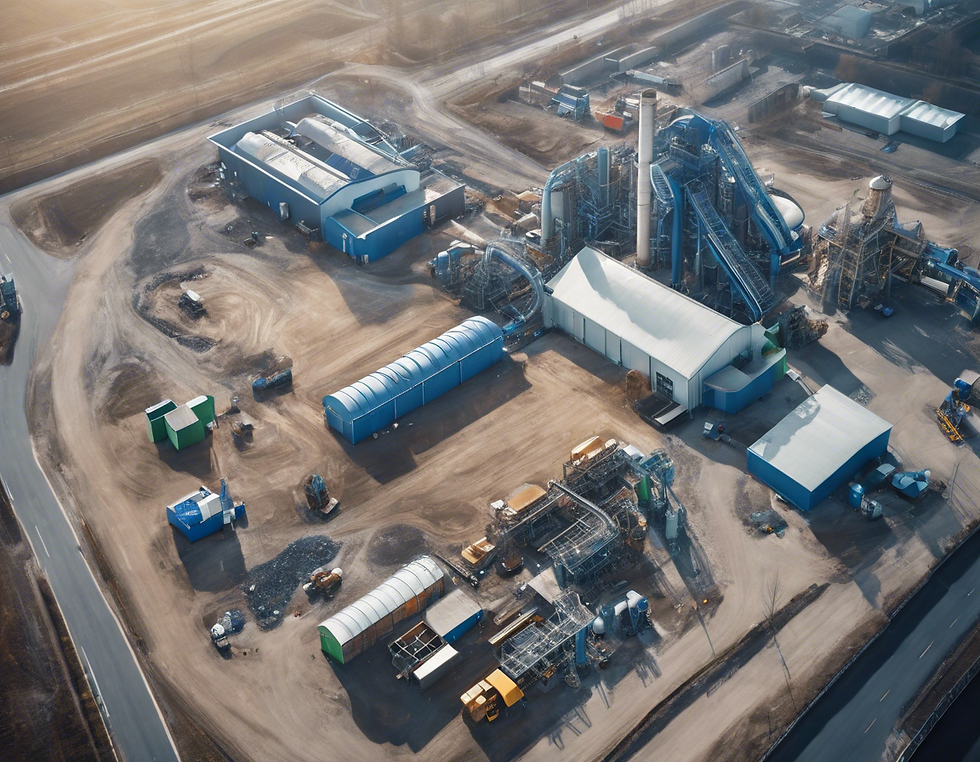RCP™: Turning Red Mud Waste into High-Performance Materials
- faithovercp
- Sep 9
- 3 min read
How Tekstein is converting an environmental liability into an advanced composite—at scale.
By Tekstein Scientific · Patent‑pending RCP™
TL;DR — Every year, alumina refineries generate millions of tons of caustic red mud. Tekstein’s Revolutionary Composite Polymer (RCP™) neutralizes and upcycles that waste into durable, high‑performance polymer composites that run on standard manufacturing lines (injection molding, extrusion, and 3D printing). Early lab data show ~60 MPa tensile strength, ~90 MPa flexural, HDT ~115 °C, very low water uptake, and ~30% lower CO₂ vs comparable virgin materials—while embedding and immobilizing the hazardous residue.
RCP™: Turning Red Mud Waste into High-Performance Materials

Why Revolutionary Composite Polymer (RCP™) Outperforms Alternatives
Environmental win: RCP consumes red‑mud feedstock, neutralizes alkalinity, and locks trace metals in a polymer matrix—passing non‑leach toxicity checks. That turns a long‑term liability into safe, durable goods.
Industrial win: Drop‑in pellets and AM powders that match or beat common engineering plastics—without retooling.
ESG win: White‑paper modeling indicates ~30% lower CO₂ vs conventional polymer+filler baselines, plus measurable waste diversion per ton produced. (See the Impact Metrics chart on page 7.)
“Revolutionary Composite Polymer (RCP™).
RCP starts by treating and neutralizing bauxite residue (red mud), then refining it into inert, micro‑sized mineral oxides—primarily Al₂O₃, SiO₂, and Fe oxides. These powders are surface‑treated and compounded into a high‑performance polymer matrix (e.g., nylon or PP), creating a chemically bonded, non‑leaching composite in pellet or powder form. The process is designed for compatibility with standard extruders, injection presses, and additive systems. (See the circular process schematic on page 2.)
What the lab says so far (headline numbers)
Early‑stage testing in the white paper reports:
Tensile strength ~60 MPa (≈20% higher than typical PA12 baselines), flexural ~90 MPa.
HDT ~115 °C under load; thermal conductivity ~0.5–0.8 W/m·K (≈2× many standard plastics).
Impact: > 12 kJ/m² (Charpy).
Moisture: <0.1% (24‑hour soak); markedly lower hygroscopy than standard polyamides.
Fire: Achievable UL94 V‑0 with formulation.
Density: ~1.3–1.6 g/cc (tunable with filler loading).These data were generated on lab coupons and early prototypes and will be expanded under ASTM/ISO protocols as pilot production ramps. (See the performance section and radar graphic on pages 3–4.)
Where you’ll see it first
Decking & composite lumber: Moisture‑resistant core materials with higher stiffness potential and stable CLTE—without wood flour.
Automotive & industrial: Under‑hood and structural plastics that want heat tolerance, abrasion resistance, and lower weight.
Additive manufacturing: SLS/MJF powders and pellet‑fed large‑format 3D printing for Invisabrace®/Invisasole® and functional parts.
Coatings & infrastructure: RCP‑derived fines as ceramic‑like additives for scratch, wear, and heat resistance.
The environmental math (made simple)
RCP’s life‑cycle modeling in the white paper points to:
≈0.5 t red mud used per 1 t of RCP (formulation‑dependent).
~30% CO₂ reduction vs comparable virgin polymer+filler systems (savings from avoided mining/refining and waste handling).
Closed‑loop water options and avoidance of long‑term ponding risks.See the Impact Metrics chart on page 7, and the remediation section on pages 2–3.
From pilot to plant: what’s next
Tekstein’s white paper outlines a scale‑up path: pilot in Ohio or Texas, then commercial throughput with sales into decking and AM, building to $40–50 M in annual material sales by year five, while diverting tens of thousands of tons of red mud annually. (See Strategic Impact and ESG Metrics and Financial Outlook on pages 7–11.)
What we’ll be judged on (and we welcome it)
Performance at scale: Meeting ASTM targets for tensile/flexural/HDT and board‑level tests where relevant.
Non‑leach & safety: Reproducing neutralization and immobilization results consistently across lots.
Unit economics: Delivering lower cost‑per‑stiffness vs incumbent materials, with reliable OEE and wear‑management.
ESG receipts: Transparent reporting on tons diverted, CO₂ avoided, and jobs created.All of these metrics are spelled out in the white paper’s validation and KPI sections.
Read the white paper
Want the full technical and ESG analysis, charts, and process schematic? Download the RCP white paper and see the data behind the headlines.
Q: What is Revolutionary Composite Polymer (RCP™)? A: A patent-pending composite that neutralizes toxic red mud and converts it into safe, high-performance materials.
Q: What industries use RCP? A: Construction, automotive, aerospace, 3D printing, and medical orthotics.
About Tekstein Scientific
Tekstein Scientific is an Ohio‑based technology innovator. RCP™ is patent‑pending and developed to convert red‑mud, silica, alumina, and iron‑oxide residues into profitable, high‑performance polymer composites—advancing circular manufacturing without compromising performance.






Comments